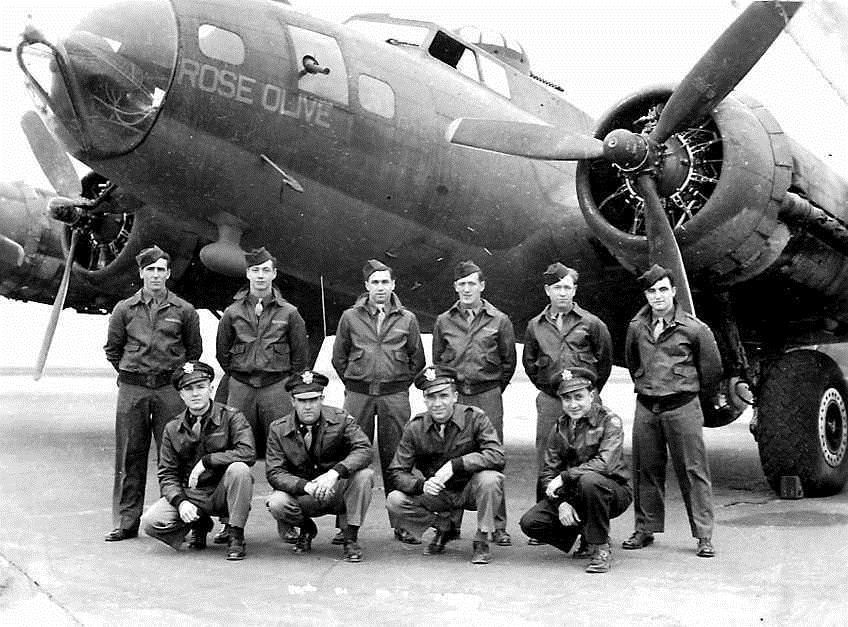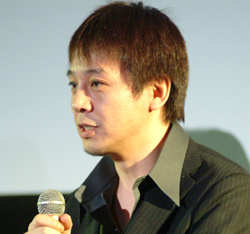|
A-2
A2, A02, A002, A², A.II or A-2 may refer to: Biology and medicine * British NVC community A2 (Lemna minor community), a plant community * A2, the second anal vein in the Comstock-Needham system of insect wing segment naming Genes and proteins * A-box 2 of insulin gene * HLA-A2, a human MHC HLA-A serotype gene * Ectodysplasin A2 receptor, a protein that in humans is encoded by the EDA2R gene * Alpha-2 adrenergic receptor * Annexin A2, a protein * Apolipoprotein A-II, a protein * Phospholipase A2, an enzyme * Prokaryotic phospholipase A2, an enzyme * Hemoglobin A2, a protein * Proanthocyanidin A2, an A type proanthocyanidin * Urea transporter A2, a protein * A2, a variant of blood groups alleles A in the ABO blood group system * A2, a subfamily of rhodopsin-like receptors Medicine * ATC code A02 ''Drugs for acid related disorders'', a subgroup of the Anatomical Therapeutic Chemical Classification System * Brachydactyly type A2, a disease * Noradrenergic cell group A2 Computing * ... [...More Info...] [...Related Items...] OR: [Wikipedia] [Google] [Baidu] |
A-2 Jacket
The Type A-2 leather flight jacket is an American military flight jacket closely associated with World War II U.S. Army Air Forces Aviator, pilots, navigators and bombardiers, who often decorated their jackets with Embroidered patch, squadron patches and elaborate artwork painted on the back. History A-1 Specification, using illustrative Drawing Number AN-6501, became Standard issue on 7-Nov-1927, but the chrome-tanned sheepskin A-1 was found not to be durable. The chocolate brown A-1 was intended to replace the sweater for pilots as it was as warm as a sweater, lined with brown mercerized cotton, and formed a better windbreak. It wasn't until 29-Sep-1944, when the existing A-1 stock had been exhausted, that the A-1 Specification was cancelled. The Type A-2 flying jacket was adopted as standard issue by the U.S. Army Air Corps on May 9, 1931, per specification number 94-3040 using illustrative Drawing 30-1415. The A-2 Specification lists the garment as "Jackets, Flying, Type ... [...More Info...] [...Related Items...] OR: [Wikipedia] [Google] [Baidu] |
A-2 (programming Language)
The A-0 system (''Arithmetic Language version 0'') was an early compiler related tool developed for electronic computers, written by Grace Murray Hopper in 1951 and 1952 originally for the UNIVAC I. The A-0 functioned more as a loader or linker than the modern notion of a compiler. A program was specified as a sequence of subroutines and its arguments. The subroutines were identified by a numeric code and the arguments to the subroutines were written directly after each subroutine code. The A-0 system converted the specification into machine code that could be fed into the computer a second time to execute the said program. The A-0 system was followed by the A-1, A-2, A-3 (released as ARITH-MATIC), AT-3 (released as MATH-MATIC), and B-0 (released as FLOW-MATIC). The A-2 system was developed at the UNIVAC division of Remington Rand in 1953 and released to customers by the end of that year. Customers were provided the source code for A-2 and invited to send their improvements ba ... [...More Info...] [...Related Items...] OR: [Wikipedia] [Google] [Baidu] |
Proanthocyanidin A2
Procyanidin A2 is an A type proanthocyanidin. It is found in avocado, chestnut, cranberry juice concentrate, lychee fruit pericarp, peanut skins, Cinchona cortex, cinnamon Cinnamon is a spice obtained from the inner bark of several tree species from the genus ''Cinnamomum''. Cinnamon is used mainly as an aromatic condiment and flavouring additive in a wide variety of cuisines, sweet and savoury dishes, biscuits, b ... cortex, '' Urvillea ulmaceae'', and '' Ecdysanthera utilis''. Synthesis Procyanidin B2 can be converted into procyanidin A2 by radical oxidation using 1,1-diphenyl-2-picrylhydrazyl (DPPH) radicals under neutral conditions. References * Procyanidin dimers {{Aromatic-stub ... [...More Info...] [...Related Items...] OR: [Wikipedia] [Google] [Baidu] |
British NVC Community A2 (Lemna Minor Community)
This article gives an overview of the aquatic communities in the British National Vegetation Classification system. Introduction The aquatic communities of the NVC were described in Volume 4 of ''British Plant Communities'', first published in 1995, along with the swamps and tall-herb fens. In total, 24 aquatic communities have been identified. The aquatic communities fall into the following six groups: * four communities of the water surface and sub-surface, in which duckweeds and/or Frogbit are the constant species; these communities ( A1, A2, A3 and A4) are found in moderately-rich to eutrophic standing waters * eight free-floating or rooted and submerged, pondweed communities ( A5, A6, A11, A12, A13, A14, A15 and A21) * six communities in which rooted water-lilies and pondweeds with floating leaves are the constant species ( A7, A8, A9, A10, A19 and A20) * three communities in which water-crowfoots and/or starworts are the constant species ( A16, A17 and ... [...More Info...] [...Related Items...] OR: [Wikipedia] [Google] [Baidu] |
Noradrenergic Cell Group A2
Noradrenergic cell group A2 is a group of cells in the vicinity of the dorsal motor nucleus of the vagus nerve in the medulla that label for norepinephrine Norepinephrine (NE), also called noradrenaline (NA) or noradrenalin, is an organic compound, organic chemical in the catecholamine family that functions in the brain and human body, body as a hormone, neurotransmitter and neuromodulator. The ... in primates and rodents. References External links BrainInfo Norepinephrine {{neuroanatomy-stub ... [...More Info...] [...Related Items...] OR: [Wikipedia] [Google] [Baidu] |
Göta Artillery Regiment
The Göta Artillery Regiment (), designation A 2, was a Swedish Army artillery regiment that traced its origins back to the 17th century. It was disbanded in 1962. The regiment's soldiers were originally recruited from Götaland, and it was also garrisoned there. History The regiment has its origins in the Artillery Regiment, raised in 1636. That regiment was split into four new regiments in 1794 of which Göta Artillery Regiment was one. The regiment was given the designation A 2 (2nd Artillery Regiment) in 1830. In 1893 four companies were split off to form Norrland Artillery Regiment and Karlsborg Artillery Corps. The regiment also changed name to 1st Göta Artillery Regiment (''Första Göta artilleriregemente'') in 1893, and another two companies were split off to form Småland Artillery Regiment in 1895. The name was changed back again in 1904. The regiment was garrisoned in Gothenburg until it was disbanded in 1962. Campaigns *? Organisation *? Heraldry and ... [...More Info...] [...Related Items...] OR: [Wikipedia] [Google] [Baidu] |
Staff (military)
A military staff or general staff (also referred to as army staff, navy staff, or air staff within the individual services) is a group of officers, enlisted, and civilian staff who serve the commander of a division or other large military unit in their command and control role through planning, analysis, and information gathering, as well as by relaying, coordinating, and supervising the execution of their plans and orders, especially in case of multiple simultaneous and rapidly changing complex operations. They are organised into functional groups such as administration, logistics, operations, intelligence, training, etc. They provide multi-directional flow of information between a commanding officer, subordinate military units and other stakeholders.PK Mallick, 2011Staff System in the Indian Army: Time for Change Centre for Land Warfare Studies, New Delhi, vol 31. A centralised general staff results in tighter top-down control but requires larger staff at hea ... [...More Info...] [...Related Items...] OR: [Wikipedia] [Google] [Baidu] |
Common European Framework Of Reference For Languages
The Common European Framework of Reference for Languages: Learning, Teaching, Assessment, abbreviated in English as CEFR, CEF, or CEFRL, is a guideline used to describe achievements of learners of foreign languages across Europe and, increasingly, in other countries. The CEFR is also intended to make it easier for educational institutions and employers to evaluate the language qualifications of candidates for education admission or employment. Its main aim is to provide a method of teaching, and assessing that applies to all languages in Europe. The CEFR was established by the Council of Europe between 1986 and 1989 as part of the "Language Learning for European Citizenship" project. In November 2001, a European Union Council Resolution recommended using the CEFR to set up systems of validation of language ability. The six reference levels (A1, A2, B1, B2, C1, C2) are becoming widely accepted as the European standard for grading an individual's language proficiency. As of 2024 ... [...More Info...] [...Related Items...] OR: [Wikipedia] [Google] [Baidu] |
IB Group 2 Subjects
The Group 2: Language acquisition (previously Second Language) subjects of the IB Diploma Programme consist of the nearly 80 additional languages offered and may be studied at the following levels: B (SL or HL), or ab initio (SL only). Schools' Guide to IBDP, p. 10. Latin and Classical Greek are also offered and may be taken at SL or HL. To earn an IB Diploma, a candidate must study an additional language, though a second Language A may be taken instead of studying that language as a Group 2 subject. Language ''ab initio'' SL If a student has no previous background in a given language, then that student may study that language as an ''ab initio'' SL subject. Such a course focuses on giving the student basic knowledge of both the language in everyday use and the culture of the places where it is spoken. The standard reached by the student after two years is considerably lower than that reached in language B. The Classical Languages (Latin and Classical Greek) are not offered as ... [...More Info...] [...Related Items...] OR: [Wikipedia] [Google] [Baidu] |
Grimoire Of The Rift
''Final Fantasy Tactics A2: Grimoire of the Rift'' is a 2007 tactical role-playing game developed and published by Square Enix for the Nintendo DS. Releasing in 2007 in Japan and 2008 in the West, the game is a sequel to ''Final Fantasy Tactics Advance'' and forms part of the ''Ivalice Alliance'', a group of games set in the titular fictional universe. The game features cameo appearances from central and supporting characters from ''Final Fantasy XII'', a title set in Ivalice. ''Tactics A2'' follows a young man named Luso Clemens after he is transported through a magical book to the world of Ivalice. Rescued from monsters by a clan leader named Cid and later joined by the thief Adelle, Luso becomes involved in battles between rival clans as he seeks a way home. Gameplay carries over mechanics from ''Tactics Advance'' including turn-based combat on a grid, a themed Job system, and a "Law" system placing limitations on player action during battles. Originally planned for Game Boy A ... [...More Info...] [...Related Items...] OR: [Wikipedia] [Google] [Baidu] |
A2 Secret Of The Slavers Stockade
''Scourge of the Slave Lords'' (A1–4) is an adventure module for the ''Dungeons & Dragons'' fantasy role-playing game, published by TSR, Inc. in 1986. It combines the contents of four earlier modules, all set in the World of Greyhawk campaign setting and intended for use with ''Advanced Dungeons & Dragons'' first edition rules. ''Scourge of the Slave Lords'' was ranked the 20th greatest Dungeons & Dragons adventure of all time by ''Dungeon'' magazine in 2004. Overview The original series consisted of four modules: * A1 ''Slave Pits of the Undercity'' * A2 ''Secret of the Slavers Stockade'' * A3 ''Assault on the Aerie of the Slave Lords'' * A4 ''In the Dungeons of the Slave Lords'' Each module is a self-contained scenario that leads into the next adventure in the series. The series is designed to be used in the World of Greyhawk, but can be imported to any campaign setting. The modules are set in the Pomarj. According to '' From the Ashes'', this adventure took place in Highp ... [...More Info...] [...Related Items...] OR: [Wikipedia] [Google] [Baidu] |



